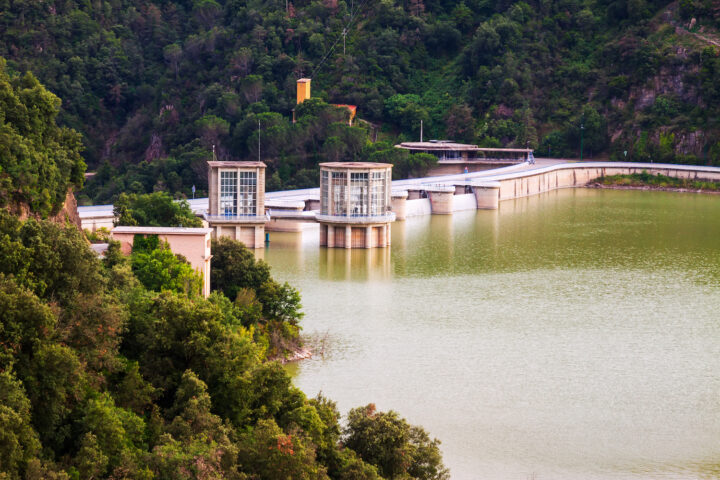6 completed and upcoming infrastructure projects that highlight Cebu’s economic prowess
Blogs
June 2, 2023

Cebu’s already-formidable economy has experienced rapid growth in recent years, thanks in part to the recent completion and greenlighting of several high-impact infrastructure projects. These projects are further heightening Cebu’s status as a regional business and cultural hub, improving connectivity, generating high-value jobs, and enhancing the quality of life for residents.
From new airport terminals, bridges, and highways to modern transportation systems and theme parks, Cebu’s new infrastructure is attracting fresh investment and boosting local prosperity. In this article, we'll explore some of the most noteworthy completed and upcoming infrastructure projects in Cebu City and Cebu Province.
1) Mactan-Cebu International Airport Terminal 2 (MCIA-T2)
Completed in 2018, this award-winning terminal has not only doubled the Mactan-Cebu International Airport’s (MCIA) capacity but has also significantly improved the passenger experience, transforming Metro Cebu into a preferred international gateway. Thanks to the new terminal, MCIA has recently snagged several important accolades, including the prestigious Routes Asia 2023 Marketing Award.
After completing a landmark deal with Megawide Construction Corporation and the GMR Group for the operation and maintenance of the award-winning MCIA, Aboitiz InfraCapital (AIC) is now planning a series of improvements that are set to make the airport a preferred facility for international travelers and airline operators alike. Once these improvements are completed, we can expect Cebu’s already impressive economy to develop even further.
2) Cebu-Cordova Link Expressway (CCLEX) and bridge
Completed in 2022, this 8.9-kilometer toll bridge connects Cebu City to Mactan at the municipality of Cordova, providing a much-needed alternative to the old Mactan-Mandaue and Marcelo Fernan bridges. Since its opening, the CCLEX bridge has significantly reduced travel time between Cordova and Cebu City, improving the flow of goods, passengers, and services between mainland Cebu and Mactan Island. Notably, the bridge portion of the CCLEX is currently the longest bridge in the Philippines, surpassing the previous record-holder, the 2-kilometer San Juanico Bridge between Samar and Leyte by a wide margin.
3) Metro Cebu Expressway
Once completed, this 74-kilometer six-lane highway will connect the towns of Naga and Danao to Cebu City's northern and southern districts. When operational, the expressway will help to reduce travel time between these areas, ease traffic congestion, and give Cebuanos wider access to job opportunities and recreational options throughout the province. Most importantly, the Metro Cebu Expressway is seen to more closely link Naga and Danao’s economies to Metro Cebu as well as to the wider Philippine and global markets.
4) Cebu Bus Rapid Transit System
With Cebu’s economy growing at such a massive rate, it is now beginning to encounter some of the congestion issues that have beset Metro Manila. To prevent these in Cebu, the national government, Cebu LGUs, and their private infrastructure development partners are developing a number of sustainable mass transit solutions.
The Cebu Bus Rapid Transit System is set to be a core solution to Cebu’s expected transportation challenges. The Cebu Bus Rapid Transit System will be the first such mass transit system of its kind in the Philippines, servicing 60,000 passengers daily in the first year and up to 160,000 once it becomes fully operational
5) Cebu Monorail Transit System
This proposed project involves the construction of around 27 kilometers of elevated monorail track in two lines as well as a depot facility strategically located close to the MCIA. When completed, this system will not only supplement the soon-to-be-completed BRT but will also provide direct access to MCIA, giving Metro Cebu a diversified mass transit system that follows globally recognized urban planning best practices.
6) Cebu Ocean Park and Events Center
Known simply as Cebu Ocean Park by the locals, the facility is the largest of its kind in the Philippines, with over triple the size of Manila Ocean Park. While the park's soft opening in 2019, unfortunately, coincided with the start of the COVID-19 pandemic, the park’s facilities have since gone on to generate massive interest among local and international tourists. The park not only features the largest oceanarium in the country but it also has a sizable section exhibiting terrestrial wildlife.
The park may also eventually develop a role that transcends its status as a mere diversion. As Cebu becomes more urbanized, Cebu Ocean Park will likely become important in helping Cebuanos maintain their connections with their shared marine heritage and their surrounding environment.
Building a better future for Cebuanos
These new and recently completed infrastructure developments are expected to create jobs, attract more tourists and businesses, and improve the overall quality of life for Cebu’s growing population. However, it’s important to understand that Cebu’s infrastructure projects are more than just ways to facilitate the province’s growth. They can also be seen as symbols of the Cebuanos’ tenacity, drive, and, modernity.
With even more high-value infrastructure projects in the pipeline, Cebu may start the next decade as an important economic and cultural hub within the Asia-Pacific region. With the help of experienced developers like Aboitiz InfraCapital, Cebuanos can expect a brighter and thoroughly modern future.






























